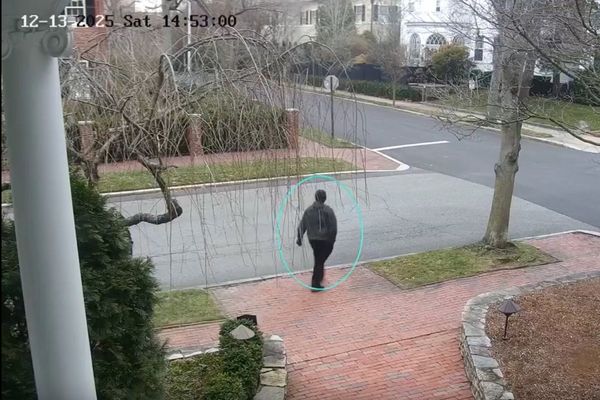
If I had a pound for every developer, designer or official who told me that a bridge, office, home or factory must be ugly because it’s “all we can afford”, reader, I would be a rich man. But what they tell you is a lie: ugliness is always a choice.
What infrastructure looks like is back in the news thanks to a delightful new railway bridge (not a phrase normally heard) designed by ADAM Architecture for the Duchy of Cornwall.
Clad in local granite, it arches elegantly over the track, is gently buttressed and has an artfully shaped keystone. It already sits easily in the landscape and once the trees have regrown will appear always to have been there. It will improve this corner of Cornwall just as so many cottages, church spires, railway arches and cathedrals have enhanced the English landscape for centuries.
So heartless are most modern buildings that we have come to assume that development is the cause of ugliness. Only 2% of the public trust new buildings to improve their area. They’re usually right. Douglas Adams wrote; “Airports are ugly. Some are very ugly. Some attain a degree of ugliness that can only be the result of special effort.” The same could be said of most of our public infrastructure over 80 years.
Take London’s new water fountains: crass, cartoonish and clashing with their surroundings. They shout at their neighbourhood. The redesigned station at Old Street roundabout, has been described, rightly, as a “soulless hell hole”. And not just by me.
New railway stations, such as Thanet Parkway, are value-engineered to a comatose bleakness that dispirits the mind, dissuades passengers and degrades the very trains that serve them. They are uncivil and anti-social.
Consider our hospitals: noble institutions serving a noble purpose. They should offer attractive, uplifting, calming environments, settings we now empirically know help recovery. Yet most modern hospitals are monolithically grim. They are visually and mentally stressful. London’s University College Hospital was shortlisted for the Carbuncle Cup – a prize awarded to the ugliest building in the UK completed in the last 12 months.
When defending such loveless lumps, modernists deploy three arguments which we might term the ‘cost’, ‘function’ and ‘doubt’ arguments. Each is nonsense.
First, cost. We’re told that we cannot afford to make things look nice. But the expense of ornament or better materials is negligible compared to the overall cost of large infrastructure. The big money is in structural engineering, logistics, planning, traffic delays. Aesthetic upgrades will normally add less than 1%, and rarely more than 5%, to total costs. If we unpicked our Byzantine planning system (the most unpredictable in the west) we could save far more.
The new granite bridge and accompanying causeway in Cornwall, for example, cost £11.8m. The extra cost of the granite cladding probably came to about 2.5%, a modest sum for a bridge that is generous to its landscape – rather than insulting.
Meanwhile, London’s ugly water fountains cost £100,000 each. Old Street’s incoherent mess was £132m. Developers are proposing to spend £7.5bn on a pitiless new Euston Station design that – let’s be honest – only a mother could love. We excel at creating ugliness, and it’s always at great expense.
Secondly, function. The modernist creed (today’s prevalent architectural movement rejecting decoration and history and favouring abstraction and industrial materials) dictates that beauty must give way to utility, that ‘form follows function’ and that ornament is a crime. Beauty should emerge from ‘honest’ structures that function efficiently. Occasionally it does, especially in the natural world. Think of a leopard leaping.
But in the built environment, many most loved features serve no structural purpose: the mosaics of Islamic tilework, the non-load-bearing pilasters, the stone filigree of a Gothic screen. We travel to see cities like Rome, Venice or Paris precisely because of such ‘useless’ detail. And people routinely pay more, 15% more in one large and controlled study, for homes they find more attractive in streets which are in traditional styles. The function of avoiding ugliness is simple: it makes us happy. That’s a purpose.
Finally, ‘doubt’. We’re told that beauty is in the eye of beholder, that one man’s modernism is another another’s Palladianism. The facts disagree. Over ten years, the social enterprise I founded, Create Streets, has developed a rigorous methodology for visual preference surveys. Across countries, political views and age groups, super majorities (typically 70-80%) consistently favour buildings that show care, coherence and a sense of place: local materials, depth and detail, symmetry, variety within a pattern. Not formless chaos but not sterile ‘spreadsheet architecture’ either. In an era of division, beautiful places can unite us.
Not only are the arguments in favour of ugliness weak, they’re becoming weaker. Modern technology is revolutionising the cost and speed of ornament. Computer Numerical Control (CNC) machines now carve stone, wood or plaster with astonishing efficiency. LIDAR and photogrammetry scan historic ornament for reproduction. The result? Moulding and carving costs have sometimes dropped by up to 90%. Ornament has never been cheaper.
We need to reinvent how we design our public buildings and infrastructure so that it is normal for a railway bridge or station to be charming. We should start with Euston Station. Few of the last century’s civic structures touch the public soul. Few will be mourned, let alone standing, in 100 years. We must embed public preferences unshakeably in the selection and design process. Instead of closed-loop design competitions, judged by designers for other designers, we must ask: what do people love? Where do they want to be?
Nothing in law, economics or physics prevents us creating a new Euston Station which is not ugly, with thousands of adjoined homes and with a roof soaring heavenwards. Ugliness is always a choice. Let’s stop making it.
Nicholas Boys Smith is the founder and chair of Create Streets.







